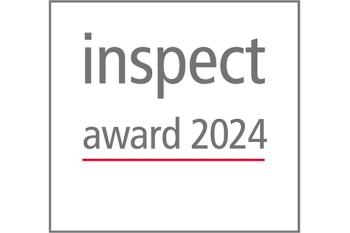Split Seconds Decide
How imaging systems are enhancing athletes' performance
Elite sports stars, teams and organisers have become some of the most intensive users of imaging technologies. From golf swing analysis to goal line technology; Myriam Beraneck from Sony Europe's Image Sensing Solutions division examines how machine vision has helped make athletes more competitive and sports fairer, including a look at one of the latest developments that helped streamline Michael Phelps at the 2012 Olympics.
The use of imaging technology to improve efficiency or accuracy is growing. The number of industries that can benefit is almost infinite and over time we've seen an increasingly diverse set of organisations realise the benefits that this technology brings. One of the first non-manufacturing sectors keen to adopt the technology was sport. Elite athletes are single-mindedly dedicated. This, coupled with the vast financial backing that many professional athletes or teams receive and the pressure this creates, means they'll look for any legal and, as the Lance Armstrong doping scandal has shown, occasionally illegal advantage. Further, at the top echelons of sport, races are typically won and lost by fractions of a per cent. Clive Woodward, who coached England to the Rugby World Cup in 2003, said it "was not about doing one thing 100 per cent better, but about doing 100 things one per cent better."
And in the American Football film Any Given Sunday, Al Pacino's character describes football as "a game of inches ... the margin for error is so small. I mean, one half step too late or to early you don't quite make it. One half second too slow or too fast and you don't quite catch it. The inches we need are everywhere around us. They are in every break of the game, every minute, every second."
And it is here that imaging systems can help athletes, creating those "inches", those small fractions of a per cent that can mean the difference between winning and losing.
Early beginnings
One of the early applications was for golf swing analysis, which used video to quantifiably analyse the stance, swing, follow through etc. using key metrics and to compare this with past footage or rival golfers. A simple vision camera with a high frame rate was all that was required; footage was then fed through to a PC running, by today's standards, very simple analysis software.
This technology was rapidly adopted by a wide range of athletes to make small improvements in technique, especially runners (gate analysis), cyclists (pedalling technique, aerodynamic positioning) and rowers (reach, body positioning, oar depth).
Real time analysis
Recent years have also seen sports event organisers adopt multi-camera systems coupled with greater computing power to deliver real time analysis and make accurate predictions of trajectory to increase the fairness of the game.
One example is Sony's Hawk-Eye, which is used in tennis and cricket as part of the adjudication process, visually tracking a ball's trajectory and displaying a record of its most statistically likely path as a moving image. Hawk-Eye advertises an accuracy of 3.6mm, even when ball speeds exceed 260kph (Samuel Groth, Busan Open Tennis Championship) and, along with Fraunhofer's GoalRef magnetic induction system, is undergoing trials by the world football body, FIFA, as a goal line technology for the 2014 World Cup in Brazil.
Hawk-Eye uses visual images and timing data to triangulate a ball's position from several high-speed video cameras located around the area of play; tennis uses 10. In real-time, the system uses at least 2 cameras to then calculate a 3D position, tracking the ball to track and predict the ball's future flight path.
Taking it to the next level
One of the latest breakthroughs comes from Denmark, where 4DDynamics and Speedo have been using vision technology to create accurate computer models of its sponsored Olympic swimmers - who include Michael Phelps. Once created, the avatars are digitally manipulated and run through computational fluid-dynamic modelling to see how each minor change can affect drag and the resulting data is used to create custom swimsuits that enhance the athlete's hydrodynamics.
80 per cent of a swimmers drag comes from their body shape and by using custom lycra panels to compress thighs, bottom and chest, Speedo reduced the athlete's drag by up to 16 per cent.
Additionally, Speedo created a swim cap that minimised wrinkles and packed hair into the dip between the head and back. Speedo estimates this reduced drag by 3.4 per cent compared with standard silicone caps. Hydrodynamic goggles were also designed to create a smooth flow of water over the head and past the eye sockets and reduce drag by 2.2 per cent compared with other Speedo goggles. Speedo reportedly spent 55,000 hours of research on the project and spends millions on athlete sponsorship, so it's vital that data is 100 percent accurate in order to maximise the advantage. 4DDynamics' latest version of its body scanner technology, called IIID Evolution, combines 29 Sony SX90 cameras, requires no external lighting, and no post processing. Data is fed to a laptop and 4DD's algorithms create the algorithm within just 5 minutes.
Summary
According to the Secret Race, written by Tyler Hamilton, Lance Armstrong's Tour de France teammate, just five per cent separates "first place in the Tour de France and the middle of the pack."
After 3,285km, just 8 seconds separated first and second place in the 1989 Tour de France. Less than 30cm separated the Oxford and Cambridge crews at the 2003 boat race. And just 0.01s separated Michael Phelps (gold) from Mike Cavic in the 2008 Olympics 100m Butterfly. High performance athletes, therefore, are looking to make just small improvements in lots of places. Be it through accurate technique analysis, or through the development of custom clothing that's more hydrodynamic, imaging systems can make up some of these percentage points.
Contact
Sony Europe B.V., Zweigniederlassung Deutschland
Kemperplatz 1
10785 Berlin
Germany
+49 30 419 551 000
+49 30 419 552 000








